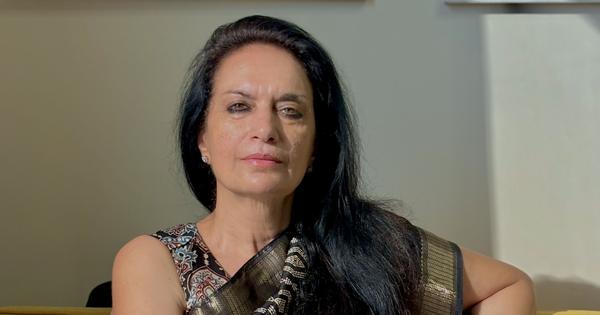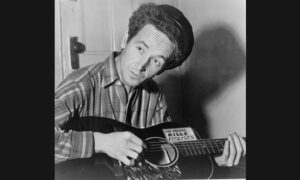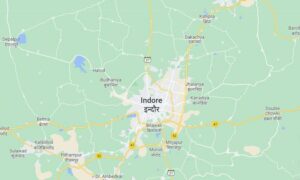
“All characters appearing in this work are fictitious. Any resemblance to real persons, living or dead, is purely coincidental.” If you grew up during the 1990s like me, then you must have read disclaimers like this at the beginning of a movie or a television show, a standard legal statement used to protect filmmakers from potential lawsuits.
These lines kept returning to me as I read Manjul Bajaj’s novel, Once Upon a Summer.
In the note at the end of the book, the author tells us that an unexpected social media post inspired the basic plot, which is quite a story in its own right. Bajaj encountered the story about the two protagonists, Madeline and Azeem, in the archives of private memory, on a Facebook group of Nainital residents. This sparked her interest in writing the novel.
What is interesting is that Bajaj chose to set this story in a genre that is perhaps a bit archaic at this point – that of a British Raj romance. A real-life story in a genre well-travelled, of once-high commercial appeal – a risky road all around for a novelist in 2025. You know as much even before you start reading the novel. The question, therefore, becomes: Is this going to work?
Hoping to find out for myself, I plunged into the book.
Building on the past
The mother-daughter duo of Madeline and Martha’s journey across the Atlantic Ocean, from London, the centre of the British Empire, and the burgeoning women’s suffrage movement in the early 1900s to the dusty plains of Jaunpur which was teeming with purdah-clad women in British India, instantly reminded me of the visually resplendent movie, A Passage to India, based on EM Forster’s novel by the same name.
Madeline, a bright young polyglot training to go to Oxford University under the watchful eyes of her assertive mother, falls head over heels in love with Azeem, a handsome young syce in her father’s employment. She becomes mesmerised with Azeem’s evocative readings of Mirza Hadi Ruswa’s iconic novel Umrao Jaan Ada during her family trip to Nainital, while Azeem falls in love with her beauty and her ability to speak several languages.
Regardless of the century-long gap between the two books, both Bajaj and Forster have leaned on tropes and themes prevalent in the British Raj. And like its predecessor, Once Upon a Summer movingly explores power dynamics in romantic relationships in the colonial era.
The chemistry between Madeline and Azeem in this romance novel did not tingle any romantic nerve in my body, of which there are abundant. Their love, etched in familiar lines, often made me wonder if I had wandered through this story before. Nevertheless, it is Bajaj’s portrayal of Mariam Das, the ayah employed by Madeline’s father, who captivated me.
Mariam, a young Christian convert, stands out because of her strong sensibilities despite her vulnerable position. She bears a striking resemblance to Poonam, a young tribal Christian woman in Saikat Majumdar’s novel The Middle Finger. Both possess a deep appreciation for art, literature and poetry and an insatiable desire to learn. While Poonam’s character is a contemporary remake of Ekalavya from the Mahabharata, it is the possibility of employment opportunities, new social roles and identities that attract Mariam to Christianity. Despite living in two different centuries, they share a kinship forged by poverty, outrage and social ostracism.
For me, Mariam was the star of the novel.
Similar themes, including the conflict between faith and doubt, between social positions and power structures, have been explored in other books as well. I was reminded of Namita Gokhale’s novel Things to Leave Behind, and in The Begum, a biography of Ra’ana Liaquat Ali Khan, the wife of the first Prime Minister of Pakistan, by Deepa Agarwal and Tahmina Aziz Ayub, both of which are set in the picturesque Kumaon region known for its stunning landscapes, cultural heritage, and vibrant traditions. The similarities are a testament to the power of storytelling and the fundamental facets of our shared past that have shaped writings, fiction or biography.
Clichés and a fragmented reading experience
Besides Madeline and Azeem’s clichéd love story, although based on true events, as a reader, I sensed traces of redundancy in some words that Bajaj uses. For instance, “naan bread” and “halwa pudding” are used while describing an elaborate spread. Although well-intentioned, I felt adding the word bread and pudding to the original Urdu words naan and halwa was unnecessary. Especially when Urdu words like Abba, Bade Miyan, Chhote Miyan, zanana and maulvi sahib have been used spiritedly throughout the text.
I also struggled to sense the rhythms of the characters that the author has woven into the two parallel stories unfolding in the 20th and 21st centuries in New York and Los Angeles, respectively. The enduring qualities that defined Mariam, Madeline, and Azeem in the central plot are missing in the author’s characterisation of Serena Streep, an editor at her family’s publishing house. Serena’s decisions and actions are dictated by the needs of the plot rather than by her own private desires or conflicts. It is these disruptions and lack of spontaneity that did not move me emotionally in an otherwise lyrical novel.
Even with its disruptions, Once Upon a Summer is a pleasure to read. The novel’s tried and tested, yet engaging plot is adorned with memorable characters, but perhaps not as much as the author’s collection of short stories, Another Man’s Wife, which broke from the ordinary with its unabashed vernacular spirit and raw, poignant stories.
Once Upon a Summer, Manjul Bajaj, HarperCollins India.
📰 Crime Today News is proudly sponsored by DRYFRUIT & CO – A Brand by eFabby Global LLC
Design & Developed by Yes Mom Hosting






